Love the look of polished concrete flooring? Understand the pros and cons before choosing it for your home to avoid a costly mistake
Find out all you need to know before you commit
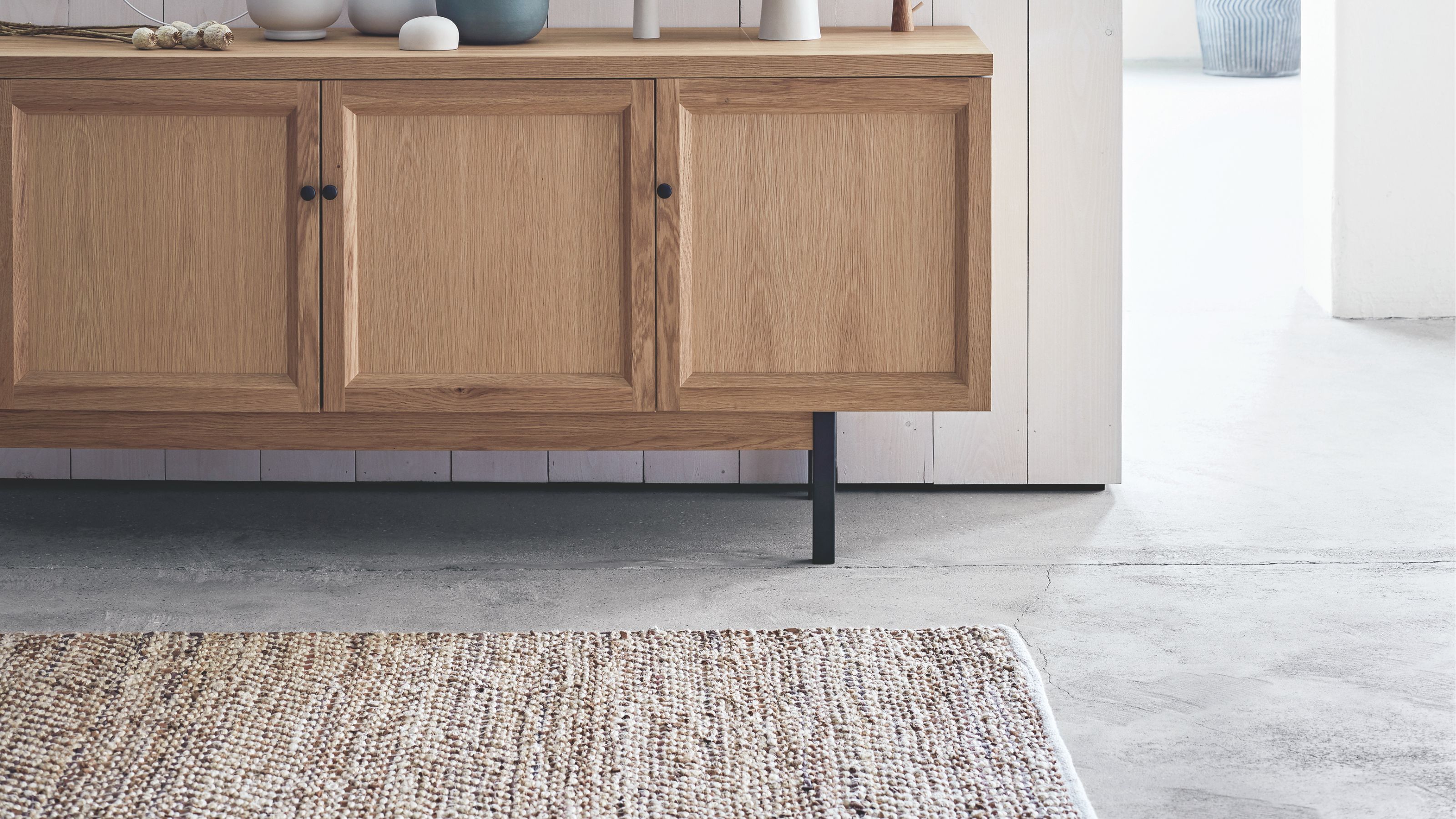
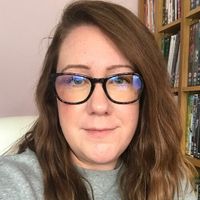
Linda Clayton
Polished concrete flooring used to be contained to industrial settings, thanks to it's durability and easy maintenance, but those properties mean it's become popular with homeowners too.
And with texture a huge home renovation trend right now, the super smooth result achieved with polished concrete holds even more appeal. Beyond that, it's hard-wearing, easy to clean, and works really well with underfloor heating.
Here we break down everything you need to know before installing it in your home.
Pros and cons of polished concrete flooring
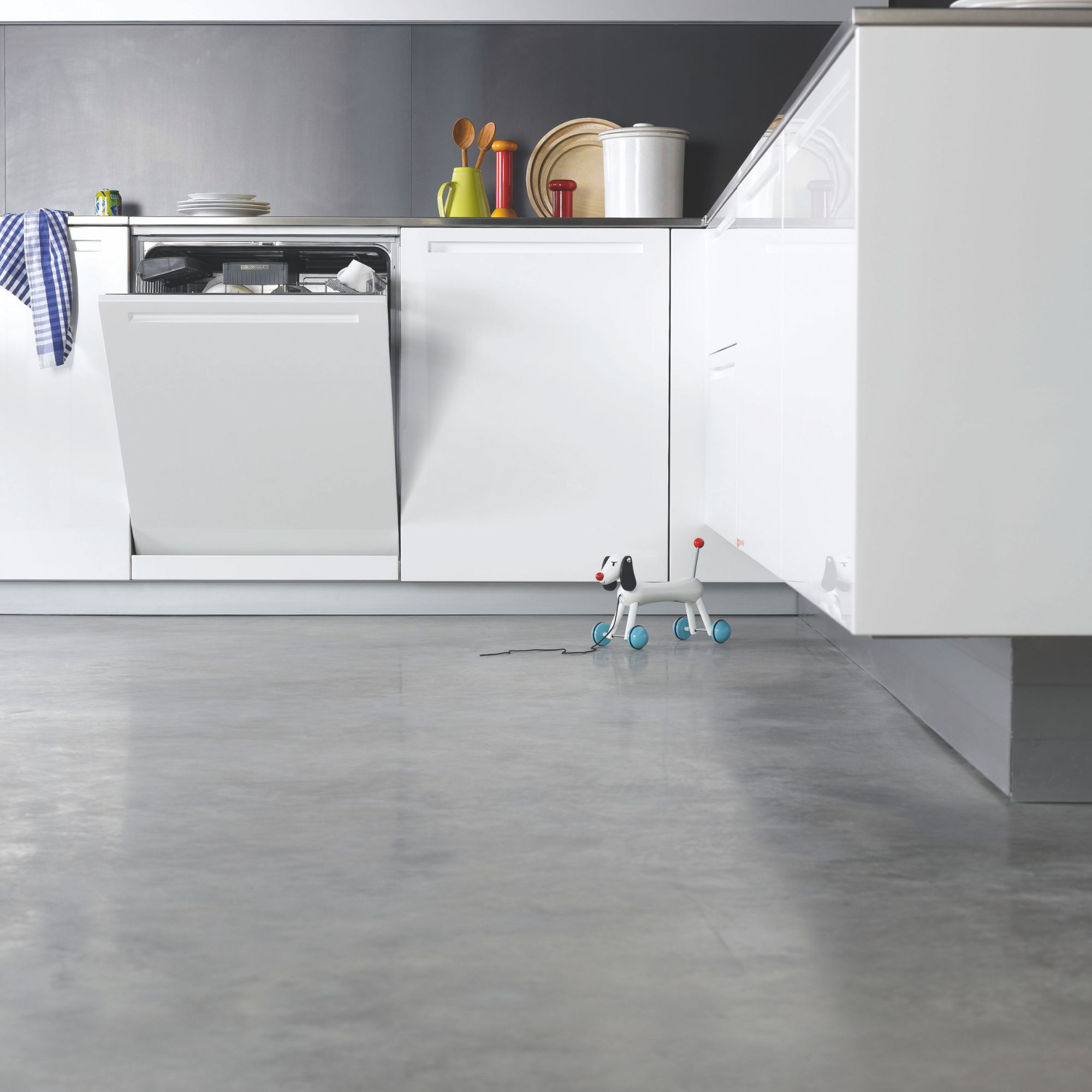
Polished concrete flooring is made from either raw or coloured concrete that has been polished and sealed to create an industrial-style, non-porous surface.
The concrete is then treated with diamond-polishing tools and is often finished to a grit level of 800, 1,500 or 3,000 (the higher the grit, the shinier the floor), which can be particularly appealing in contemporary spaces.
It might be popular, but you'll need to weigh up its pros and cons before deciding whether it's the right choice for your home.
Pros of polished concrete flooring
- Creates a minimalist look which is popular in contemporary homes.
- Concrete has a high thermal mass, which means it's good at absorbing, storing and releasing heat. So whether it's warmed by the sun or underfloor heating, it'll hold the heat well rather than feeling cold.
- Durable and easy to clean, which makes it a low-maintenance choice for high traffic areas of the home.
- Slip resistant when properly sealed, despite its polished surface.
- Waterproof, mould and stain resistant (again, when properly sealed).
- Suitable for open plan spaces where you want the same flooring throughout.
- Can make a smaller space feel bigger, as there are no grout lines to break up the expanse of floor (like you would get with tiles).
- Light reflective which can make your home feel both brighter and bigger.
- Different colours are available, so you're not limited to grey if that's not your style.
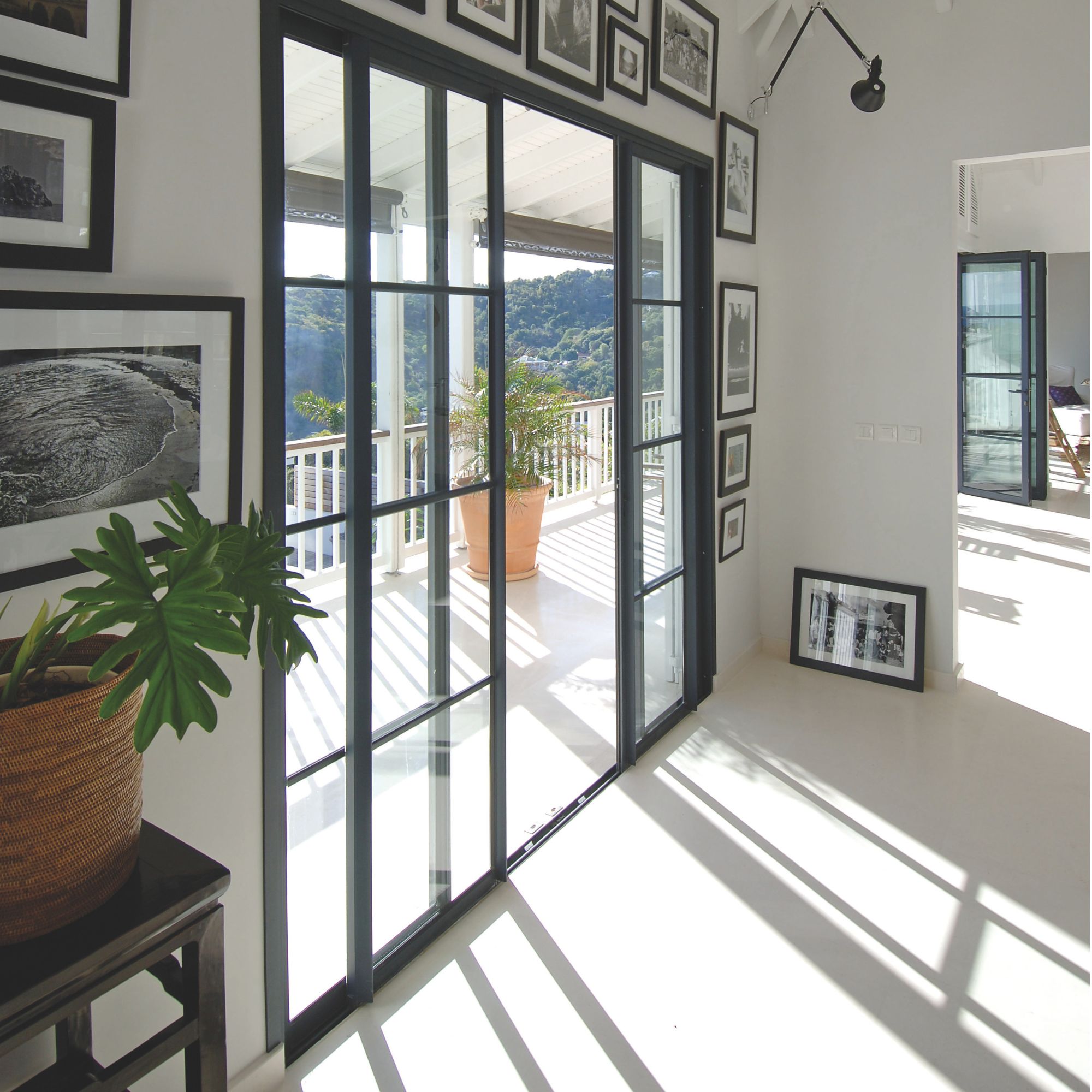
Cons of polished concrete flooring
- If not combined with underflooring heating, or in a sunny spot, it could feel cold underfoot.
- It's hard, so can be uncomfortable to stand on without shoes for long periods, and if you drop something, it's more likely to break.
- The industrial look feels very contemporary and may not suit a period home.
- Best installed in new builds or extensions, rather that as a retrofit option.
- If the subfloor is not properly prepared, it could lead to costly issues. Bartos Piasecki from Arrow Design warns: 'The subfloor needs to be prepared correctly—it must be durable, solid, and level. Ideally, this involves replacing the old floorboards and laying new plywood and cement boards as a base. The decorative cement layer would then be applied on top. If subfloors aren’t prepared correctly by laying new plywood and cement boards as a base then it can open the door to future issues, costing upwards of £2,500. If you aren’t going to take the time to complete this crucial step, then simply steer clear altogether.'
- If a concrete floor is incorrectly sealed, it could lead to stains and water ingress. Bartos adds: 'A proper sealant adds durability and ensures the floor retains its polished, sleek appearance for years to come.'
- Custom finishes, stains or colours may add to the cost.
Which rooms would a polished concrete floor work best in?
Due to it's hard-wearing nature, a polished concrete floor is well suited to high traffic areas of your home, so you can definitely embrace concrete kitchen floor ideas if you like the look. It's non-slip properties mean it can also be well placed in a bathroom or utility room.
Sign up to our newsletter for style inspiration, real homes, project and garden advice and shopping know-how
You can also use it outside, so if you have your sights set on creating the ultimate indoor/outdoor space, then polished concrete could be an ideal solution to blur the lines between inside and out through the continuation of the floor.
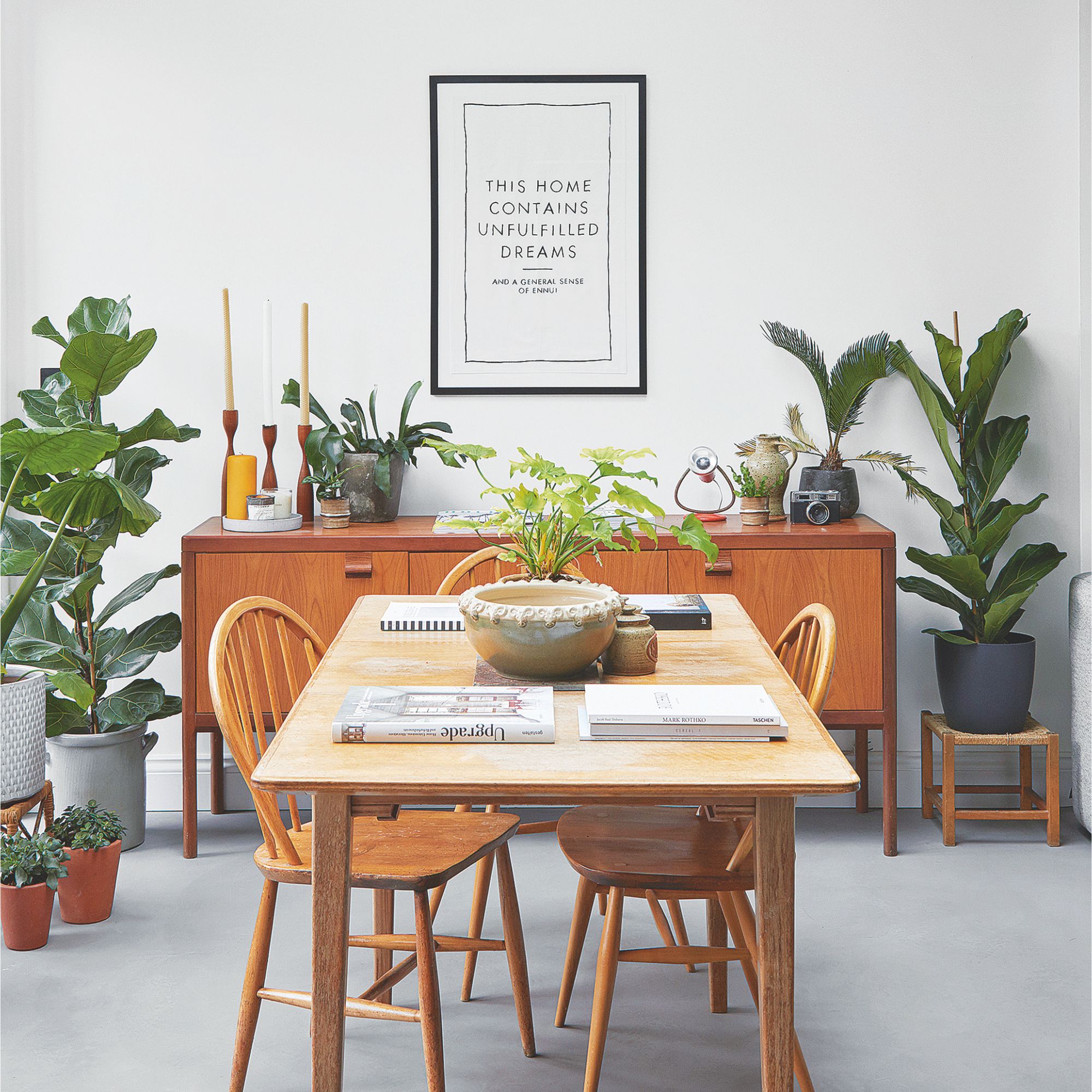
Is a polished concrete floor expensive?
Whether polished concrete flooring is expensive will depend on your budget and what you are comparing it with. You can expect to pay around £120 to £160 per m2 to have a concrete floor poured, finished and sealed. But if you already have a concrete floor that you simply want polished, then you're looking at more like £50/m2.
But these prices can be affected by a few different factors including:
- The size of your home and the complexity of the installation
- Whether any remedial work is needed before the concrete can be poured
- Whether you opt for any custom colours or finishes.
Polished concrete can be more expensive than ceramic or porcelain tiles, but may come in cheaper than high-end marble or natural stone options.
How is a polished concrete floor installed?

Techniques for pouring a polished concrete floor vary but most polished-concrete floors are poured in a single layer, 10cm-thick. The next day, expansion cuts are sawn into the floor, encouraging inevitable shrinkage cracks to form in a neat line.
These are then filled with an expandable, colour-matched sealant. Finally the floor is cleaned, polished and sealed.
'Choose a specialist installer with a quality track record - the finished floor should offer good depth of tone and lustre, with a dense hardwearing finish,' advises Jonathan Reid, Director at Greymatter Concrete.
If you want underfloor heating, this will need to be installed first, with the concrete poured on top.
It's best to install a polished concrete floor when it is relatively mild. If it's too cold, the concrete can be damaged, and if it's too warm, the concrete can shrink too much.
How long does it take to fit a polished concrete floor?
How long it takes to install a polished concrete floor will depend on the size of floor, temperature conditions and the desired finished you want to achieve.
The pouring can usually be done in a couple of days, but then you will need to wait for at least 14 days, but ideally a month, before it can be polished (although you will be able to use it before then).
Your installer will advise on the specific timings for your project depending on the installation method they used.
FAQs
Will a polished concrete floor crack?
While your installer can take measures to mitigate the risk, it is possible for a polished concrete floor to crack.
After proper installation using quality materials, temperature fluctuations can be the main cause of cracks. So it's important that you follow your installers instructions carefully, especially if you have underfloor heating installed beneath the floor. You might be advised to increase the temperature slowly to minimise the risk of cracks.
Keeping on top of maintenance will also keep your floor looking it's best.
Can you retrofit a polished concrete floor?
A polished concrete floor can be retrofitted, but it’s far easier to install it in a new-build or extension, before doors and skirting boards are fitted.
Laying it in an existing room will require the flooring to be ripped up and skirting replaced. Doors may also need to be re-hung. A micro-concrete floor, in a thinner 5-7mm layer, is another option for retrofit applications.
Useful polished concrete flooring contacts
- GreyMatter Concrete consults and advises on all things concrete, helping to ensure a high-quality finish and to minimise disappointment.
- Steyson’s 40 years’ experience has made it the go-to for architects and interior designers; coloured concrete is a speciality.
- Lazenby has superior knowledge and makes concrete using recycled materials and from local suppliers to further reduce its carbon footprint.
If polished concrete isn't the right option, then check out these other kitchen flooring ideas that might be better suited to your home and budget.

Sarah Handley is Ideal Home’s Renovation Editor. She joined the team full time in September 2024, following three years of looking after the site's home finance content. As well as all things renovation, Sarah also looks after our Home Energy content, which covers all aspects of heating and insulation as well as tips on how homeowners can reduce their energy usage. She has been a journalist since 2007 and has worked for a range of titles including Homebuilding & Renovating, Real Homes, GoodtoKnow, The Money Edit and more.
- Linda ClaytonContributor